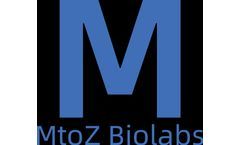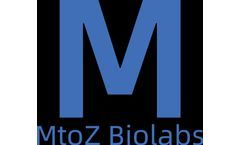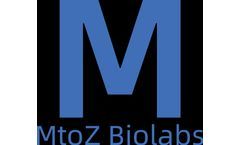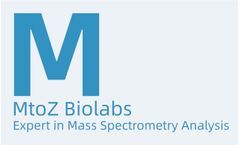Refine by
Tissue Samples Articles & Analysis
35 articles found
FFPE blocks not only preserve the tissue architecture but also allow for long-term storage and easy transportation, making them invaluable in various research contexts. ...
While each has its strengths, the combination of these methods—ImmunoFISH—offers a unique and comprehensive approach to investigation at the cellular and tissue levels. Understanding the Techniques FISH is primarily utilized for detecting and localizing specific DNA sequences on chromosomes. ...
The Frozen Section Technique The process of preparing frozen sections involves several key steps that ensure the preservation of cellular architecture and molecular integrity. Tissue samples are first harvested from the lungs of C57 mice, often following euthanasia in accordance with ethical guidelines. The lungs are then rapidly cooled in an optimal cooling ...
Discover how matched tumor-normal sequencing can help clinical researchers detect the somatic origin of variants with certainty. In the era of precision oncology, it has become increasingly common for patients diagnosed with cancer to undergo tumor sequencing. Identifying the mutations that make up a tumor’s genomic landscape can help guide selection of targeted therapies and inform ...
This technology identifies the diversity and specificity of T cells by measuring the sequences of the rearrangement regions of the TCRβ chain or α chain genes.(1) Sample Preparation: Total RNA or DNA is extracted from blood, tissue, or other samples enriched with immune cells.(2) Amplification: PCR amplification is performed using specific ...
Extraction of Cells or TissueCollect cell or tissue samples and lyse the samples with an appropriate cell lysis buffer (containing protease inhibitors) to release proteins.2. Sample Pre-TreatmentSamples can be broken down by sonication or centrifugation to break cell nuclei. ...
When it comes to detecting protein ubiquitination, Co-IP can be used to determine whether the target protein is ubiquitinated, and its interaction with ubiquitin protein.Analysis Workflow1. Sample PreparationCollect cellular or tissue samples, and lyse the cells with appropriate cell lysis buffer to extract proteins.2. ...
Therefore, the content of collagen can be indirectly estimated by determining the hydroxyproline content in the sample.(2) The method is to acid hydrolyze the sample, then react with Chloramine-T and p-Methylaminobenzaldehyde (PMB). ...
Metabolomics Research Methods Metabolomics collects samples through established metabolomics research methods, and subsequently uses techniques to obtain metabolites, determine whether there are statistical differences in metabolites between groups and perform further analysis. ...
The results show that most common pediatric brain tumor samples can be differentiated with DMS. DMS shows promise in becoming and additional instrument for real-time diagnosis of brain tumors. (The header image for this post shows an illustration of the laser sampling unit. The system is capable of vaporizing small tissue ...
These innovative approaches include genetic testing, next-generation sequencing, and biomarker analysis, which allows for more accurate and early detection of rare diseases by analyzing a patient's genetic makeup or identifying specific biomarkers in their blood or tissues. Genetic testing is one such breakthrough in diagnostics that has revolutionized the field of rare ...
They break down proteins, easing the isolation of DNA from cellular or tissue samples. Cell Culture: In cell culture processes, Native Porcine Pancreatin is instrumental for detaching adherent cells. ...
It can then direct the pathologist’s attention to both the suspicious slides within a case and the suspicious areas on the tissue sample. This can help pathologists to better prioritize their worklist and spend less time on non-suspicious slides, save time finding suspicious regions on each individual slide, and increase diagnostic confidence and efficiency ...
Since the 19th century, the practice of tissue processing has remained largely unchanged, resulting in solidified, paraffin-embedded tissue blocks for sectioning. As staining procedures have advanced and immunohistochemistry is becoming more widely used, high-quality tissue sections are paramount for accurate interpretation of disease ...
We generated a prediction model using 153 samples, with validation using an additional 58 clinical outcome-blinded samples. Gene expression profiles were generated using formalin-fixed, paraffin-embedded tissue samples and microarrays. Data analysis was performed using a supervised clustering method. The prediction model ...
Abstract Cellular function in tissue is dependent on the local environment, requiring new methods for spatial mapping of biomolecules and cells in the tissue context1. ...
Data from 144 tissue samples in the feasibility study demonstrated that SubB2M immunohistochemistry detected melanoma with 91% sensitivity and discriminated between malignant melanoma and benign skin lesions. ...
Every month we will highlight our pick for Map of the Month to show how our spectrometers can be used to reveal all the hidden secrets in your samples. April Studying animal tissue is an important tool for scientists to learn more about the effects of treatments for illnesses in humans. ...
Pathologists conduct a biopsy on a tissue when a carcinoma case for a patient is suspected. They stain the cells on that tissue using some biochemical materials that react with a certain cell element. ...
The team prepared slides with barcoded oligonucleotides — short strands of RNA or DNA — that can capture messenger RNA from an intact tissue slice, such that each transcript could be assigned to a particular position in the sample according to its barcode. “No one really believed that we could pull out a transcriptome-wide analysis from a ...

















